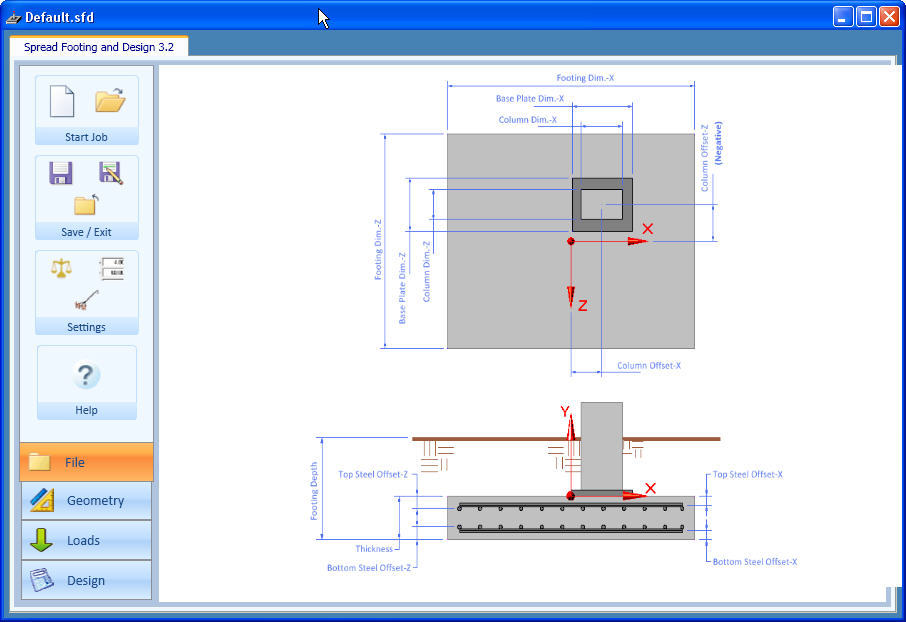Rectangular and continuous footing design is one of the most important aspects of any building project. The footing supports the foundation and bears the entire weight of the structure. Make a mistake in the design or construction of the footing, and the results could be disastrous.

ASDIP FOUNDATION is a structural engineering software utilized by engineers for design of concrete foundations, such as spread footings, strap footings, and combined footings, per the latest ACI 318 provisions. ASDIP FOUNDATION substantially simplifies time-consuming calculations for structural engineering design. Load combinations per ASCE 7. STAAD Foundation Advanced analysis and design software addresses the building, plant, and tower industries by offering basic foundations such as isolated, combined, pile cap, and mat to specialized foundations including horizontal vessel foundations, tank annular ringwall, lateral analysis of pile/drilled pier, and state-of-the-art vibrational. Footing Design. The footing module designs reinforced concrete spread footings: A single table displays the input/output data for all footings in the project. Default parameters are defined for the project and different parameters may be defined for selected footings. Design features. Rectangular and continuous footing design software is often used to calculate precise floating dimensions for varying soil types, structural sizes, and steel reinforcement requirements. The precise calculations provided by the software ensure proper low distribution and structural integrity.

Continuous Footing
Rectangular Footing
The purpose of the footing
The footing provides a stable flat supportive base that distributes the weight of the load of the structure into the surrounding soil. The weight distribution is spread out through the soil as the distance increases from the footing. For this reason, the texture of the soil is crucial to the success of any rectangular or continuous footing design.
The soil immediately surrounding the footing is the most crucial area and is also generally the most damaged area as well. When the soil is disturbed during the digging of the footing, the texture of the soil is changed and air is introduced. This reduces the bearing capacity of the soil. For this reason, the soil must be tightly compacted before pouring a concrete footing. This can be done with a vibrating plate compactor, a jumping jack compactor, or by adding soil, sand, or gravel to create the proper consistency.
Uncompacted soil leads to settling in the foundation of the structure. This can lead to
- crack plaster
- masonry
- drywall
- even structural failure if the displacement is severe
1/2 inch or larger gravel is often used as a base for backfill during rectangular and continuous footing design. The size of the stone ensures that concrete maintains contact with rock, and creates a self-compacting base that is capable of supporting the footing.
Different types of soils such as sedimentary rock, sand, gravel, silt, and clay all have different load bearing pressures. Soil testing is often required before the footing design process can proceed. A hand penetrometer can be used on-site to test the pressure capacity of the soil.
Footing Design Software Online
Soil that is incapable of supporting larger load can be compensated for by installing a wider footing. If the footing extends beyond the structure wall for distance that is greater than the thickness of the footing, the concrete can crack. Proper concrete dimensions are crucial to providing a stable footing. Rectangular and continuous footing design software is often used to calculate precise floating dimensions for varying soil types, structural sizes, and steel reinforcement requirements. The precise calculations provided by the software ensure proper low distribution and structural integrity.